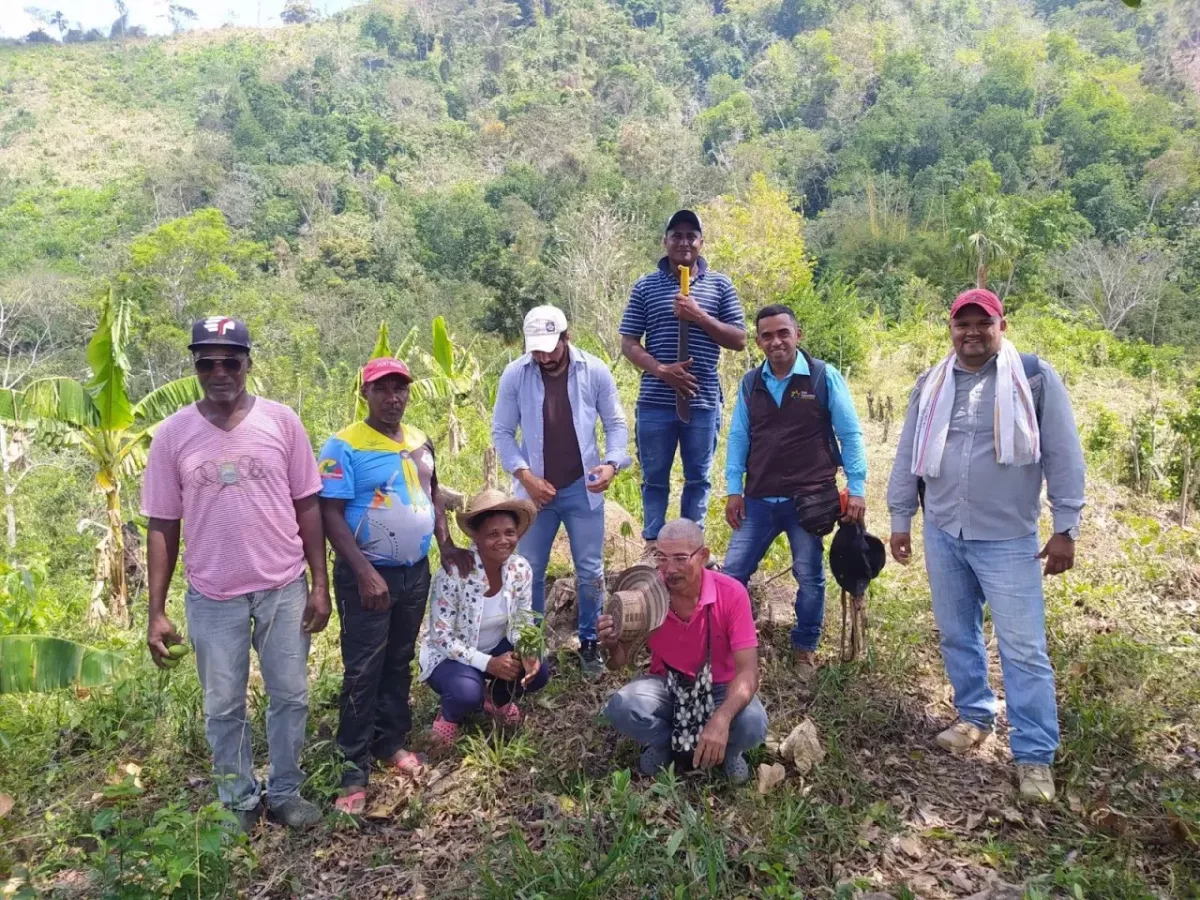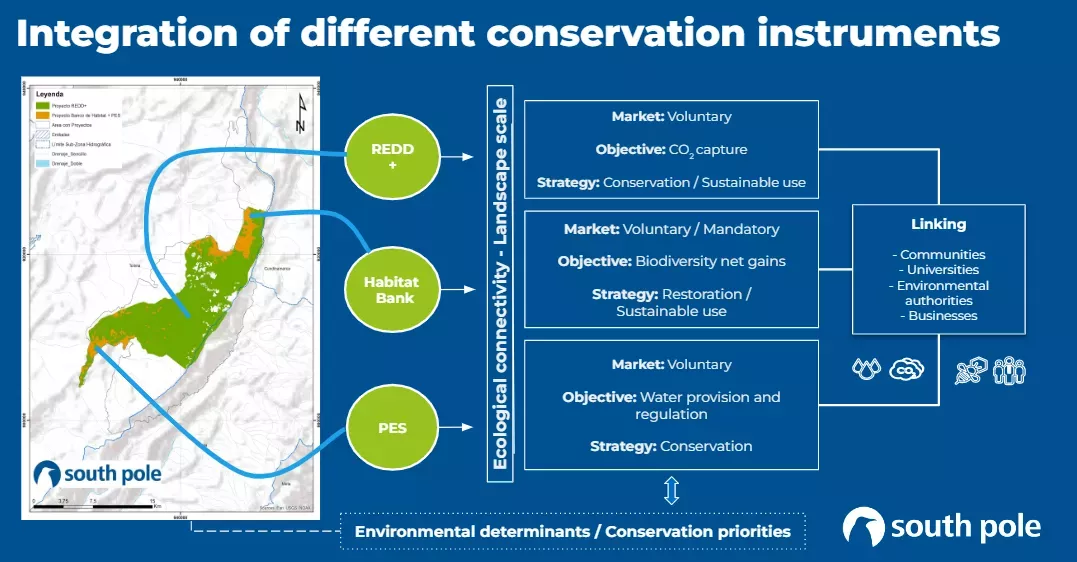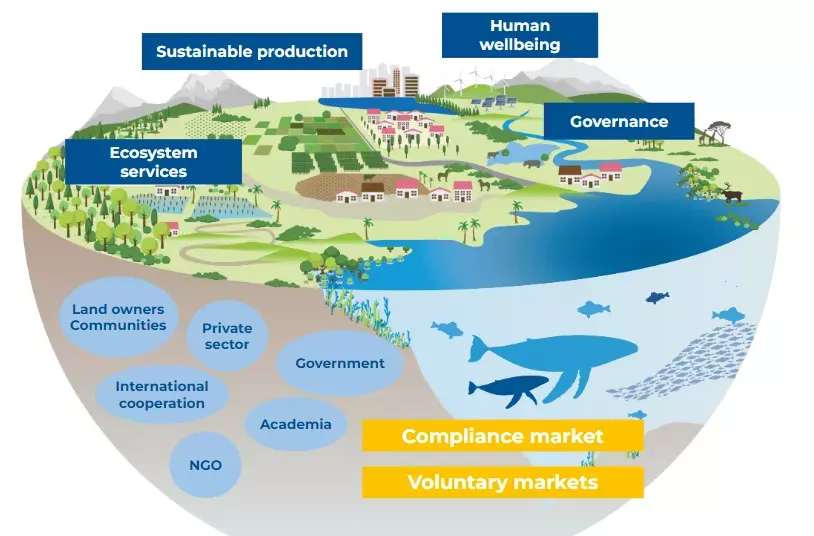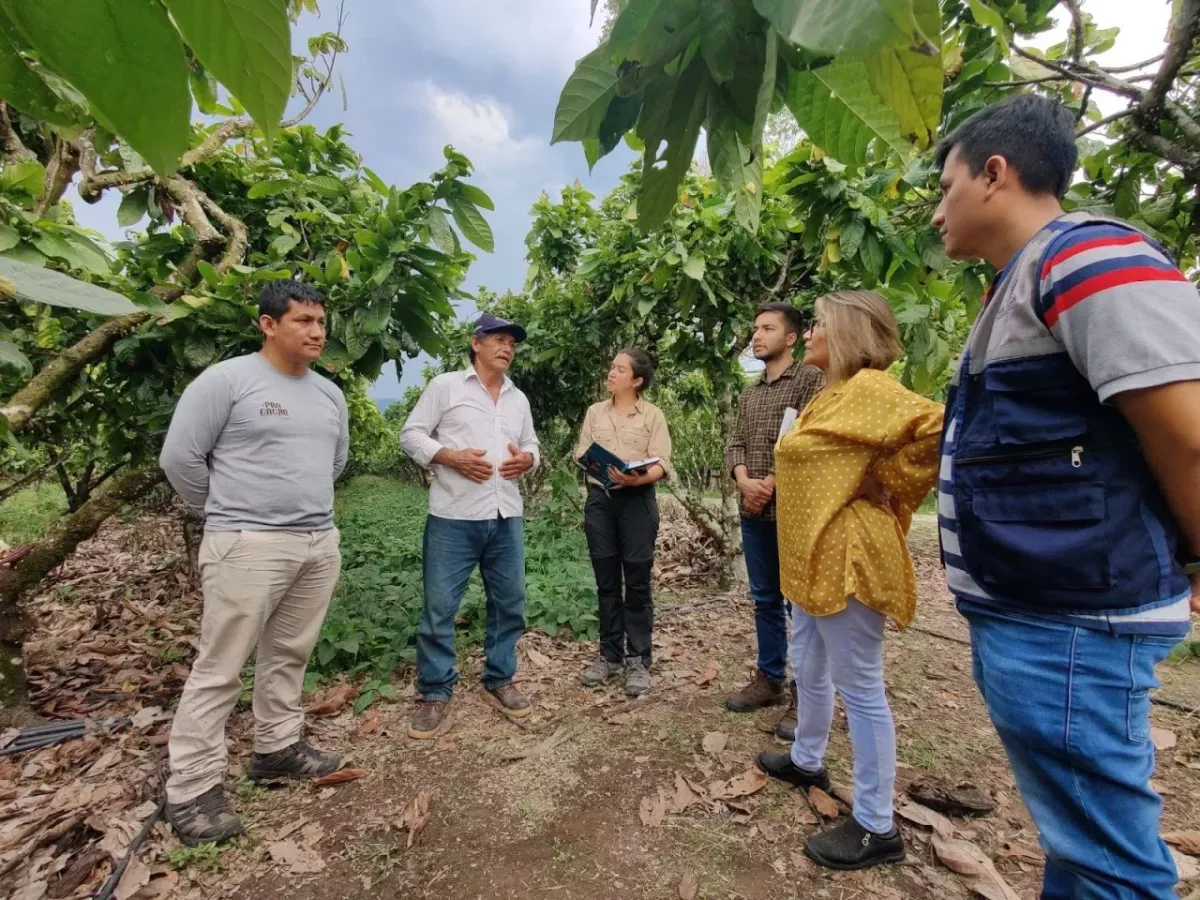The Sustainable Landscape Approach Puts Collaboration at the Heart of Biodiversity Action
The sustainable landscape approach (SLA) is a collaborative process that integrates policies and practices for multiple land uses within a given area. This is done in order to effectively address environmental challenges and maximise positive outcomes.
He works all day under the shade of a wonderful forest to produce coffee, cocoa and vegetables. While he works, his children go to school and his wife prepares food that is harvested from the plot.
Like Don Manuel and his family, there is not a single person or business that does not rely on services provided by our natural ecosystems. Yet the adverse effects caused by species overexploitation, changes in land and sea uses, habitat loss, invasive species, pollution, climate change and displacement of communities are putting these ecosystems under ever-increasing pressure. This means we are increasingly challenged on how to preserve natural capital while also meeting production and consumption needs.
But there is a solution. All stakeholders who make use of a landscape's natural resources, whether directly or indirectly, have a key role to play in maintaining the ongoing health and feasibility of that landscape. A collaborative approach is the best way to achieve global climate and biodiversity goals and to protect our landscapes – and this is where the sustainable landscape approach comes in.
What is a landscape?
There is currently no scientific consensus on the definition of a 'landscape.' South Pole considers a landscape to be a geographical space consisting of natural and/or human-modified ecosystems which are influenced by ecological, historical, political, economic and socio-cultural activities and processes.
To get the boundaries just right, the area to be considered as a landscape should be defined collectively and collaboratively by all the stakeholders involved, with a clear goal in mind of maximising positive impacts while maintaining control over the monitoring and governance processes. If a defined landscape is too small, it won't capture the breadth of activities that influence or are impacted by the natural health of the landscape. But if it's too big, it may not be useful for driving action relating to governance, ecosystem services, human living patterns, supply chains, and sustainable production.
The Sustainable Landscape Approach (SLA)
The sustainable landscape approach (SLA) is a collaborative process that integrates policies and practices for multiple land uses within a given area. This is done in order to effectively address environmental challenges and maximise positive outcomes.
The sustainable landscape approach brings together all stakeholders (landowners, businesses, governments, civil society, NGOs, investors and others) who have an influence on a specific landscape and incentivises them to partner up in working towards a common goal. The specific roles and responsibilities for the SLA are defined in an action plan, and a committee and landscape manager are also appointed to lead the coordination and the follow-up. Consensus and communal benefit should be at the heart of the process.
Ultimately, the sustainable landscape approach ensures that the landscape is considered as a broader ecosystem of activities and actors, rather than as a patchwork of individual sites and/or projects. The approach also helps address the environmental, social and political challenges commonly associated with the protection and restoration of ecosystems: by systematically coordinating the design, implementation, monitoring, and follow-up of the activities implemented in a territory by a given group of actors, the SLA seeks to reconcile agricultural, industrial, conservation, economic development and other competing land use activities..
Benefits of the SLA
Managing an area with a sustainable landscape approach can provide several key benefits, including:
- Enhanced ecosystem services to store carbon, maintain watersheds and conserve biodiversity, all contributing to the local economy and to productivity in the agricultural sector.
- Improvement of value chains through more efficient use of resources, along with reduced pressure on the agricultural frontier on local ecosystems.
- Defined opportunities for technical assistance to build farmers’ capacities in the sustainable management of natural resources.
- The design of financial mechanisms to channel investments into promoting biodiversity and reducing emissions.
- Better access to premium markets and potentially higher incomes from implementing sustainability protocols that are recognised by buyers.
- Incentives for communities to take conservation actions based on clear results.
- Greater recognition of all stakeholders, activities, and challenges through an inclusive governance structure.
The four pillars of sustainable landscape management
All activities implemented under the SLA — like forest conservation or restoration, the installation of solar panels, development of agroforestry and silvopastoral systems, capacity building, job creation or creating better health or education infrastructure — should fall under one of four fundamental pillars:
- Governance: actions to promote transparency, participation, inclusion, and coordination in land use policies.
- Human well-being: actions to protect and improve quality of life across health, education and employment.
- Sustainable production: actions to manage supply chains by using more sustainable practices with a reduced impact on ecosystems.
- Natural capital: actions to protect and restore ecosystems, biodiversity and ecosystem services.
Such activities are generally implemented and monitored by the owner of the land area that is being managed with a sustainable landscape approach, and this landowner receives technical support from other stakeholders, including NGOs, academics and project developers. The landowner reports on progress using specific metrics and shares any lessons learned in order to improve the management of the landscape.
Can two different conservation instruments coexist?
Within a landscape, environmental projects can be leveraged to improve the local quality of life and to conserve vulnerable ecosystems, all while contributing to the fight against climate change and offering adaptation options for local communities.
Depending on a landscape’s characteristics, different types of projects can be combined within a landscape’s boundaries, even when those projects are associated with different environmental markets (i.e. the compliance or voluntary market). For example, a single landscape could combine a REDD+ project in a stable forest, a habitat bank for biodiversity offsets, and a water payment for ecosystem services scheme (PES).
Case study: the Alicante River Canyon
South Pole’s Alicante River Canyon project is an example that brings together different project types within the same landscape. Deep in the mountains of the department of Antioquia, Colombia, small communities of landowners cultivate the land and raise cattle between patches of forest. In some cases, agriculture is combined with agroforestry systems of cocoa, coffee, and fruit trees, while cattle ranching is sometimes established in silvopastoral systems, meaning that agroforestry, foraging and the grazing of domesticated animals are integrated in a mutually beneficial way.
The common goal of the project is to create ecological corridors that connect areas subject to sustainable production practices (e.g. agroforestry) with remaining forest patches and protected areas.
Communities in the landscape in Antioquia are already experiencing the negative impacts of climate change and biodiversity loss. Developing projects under the SLA provides an opportunity to channel investments into maintaining ecosystem services and protecting biodiversity – but also into supporting the development of smallholder farmers and rural communities in an effective, measurable way.





